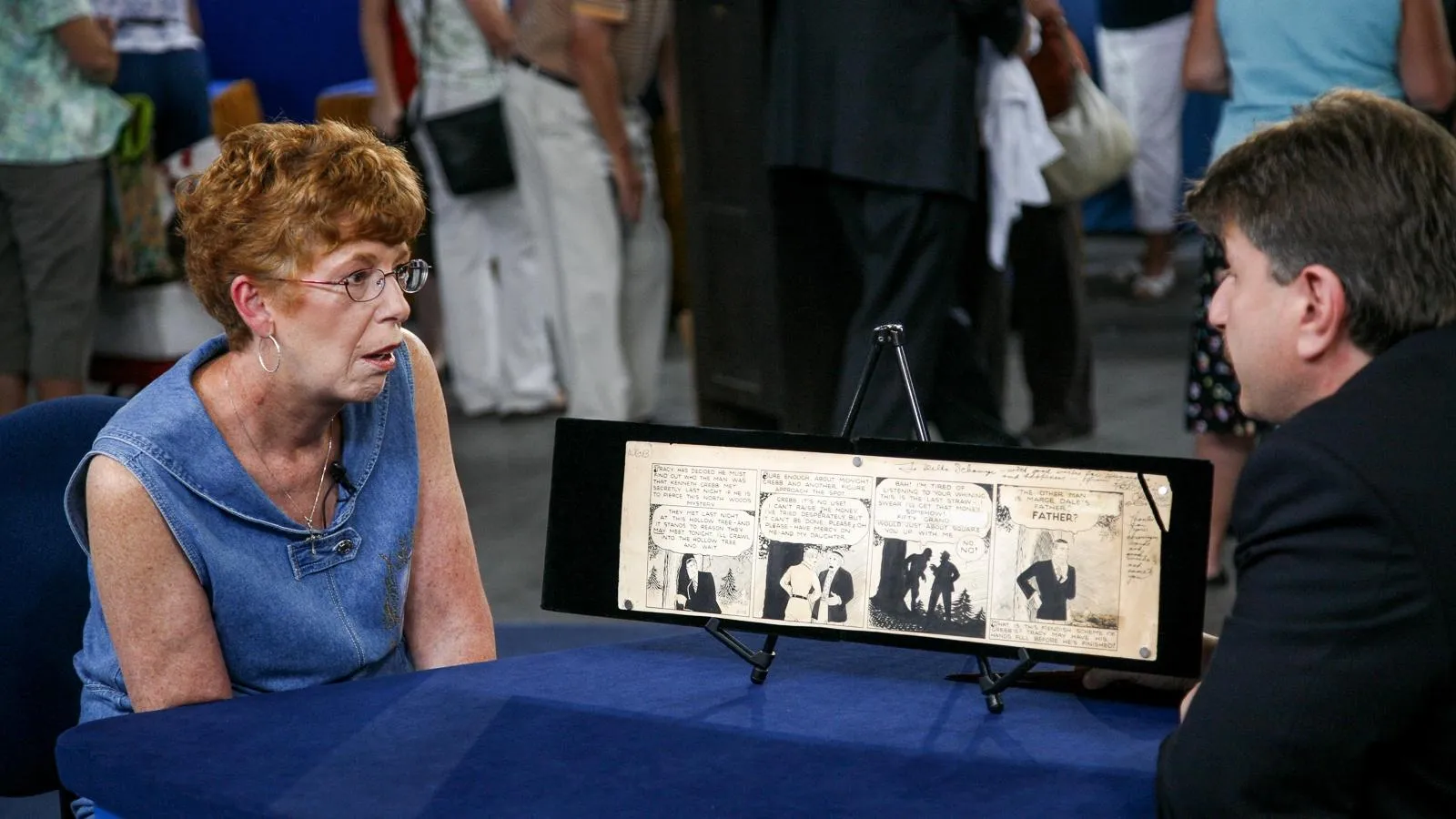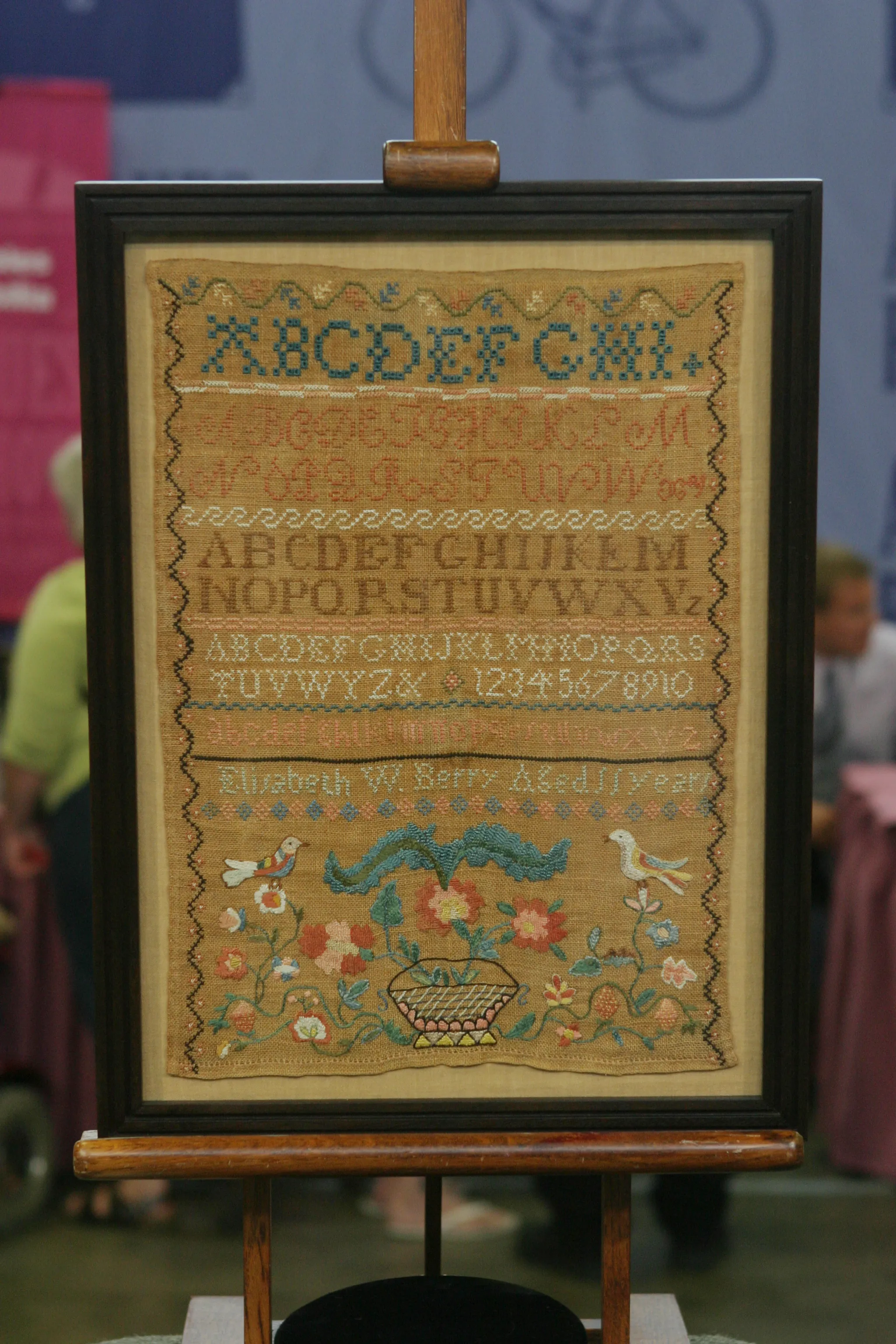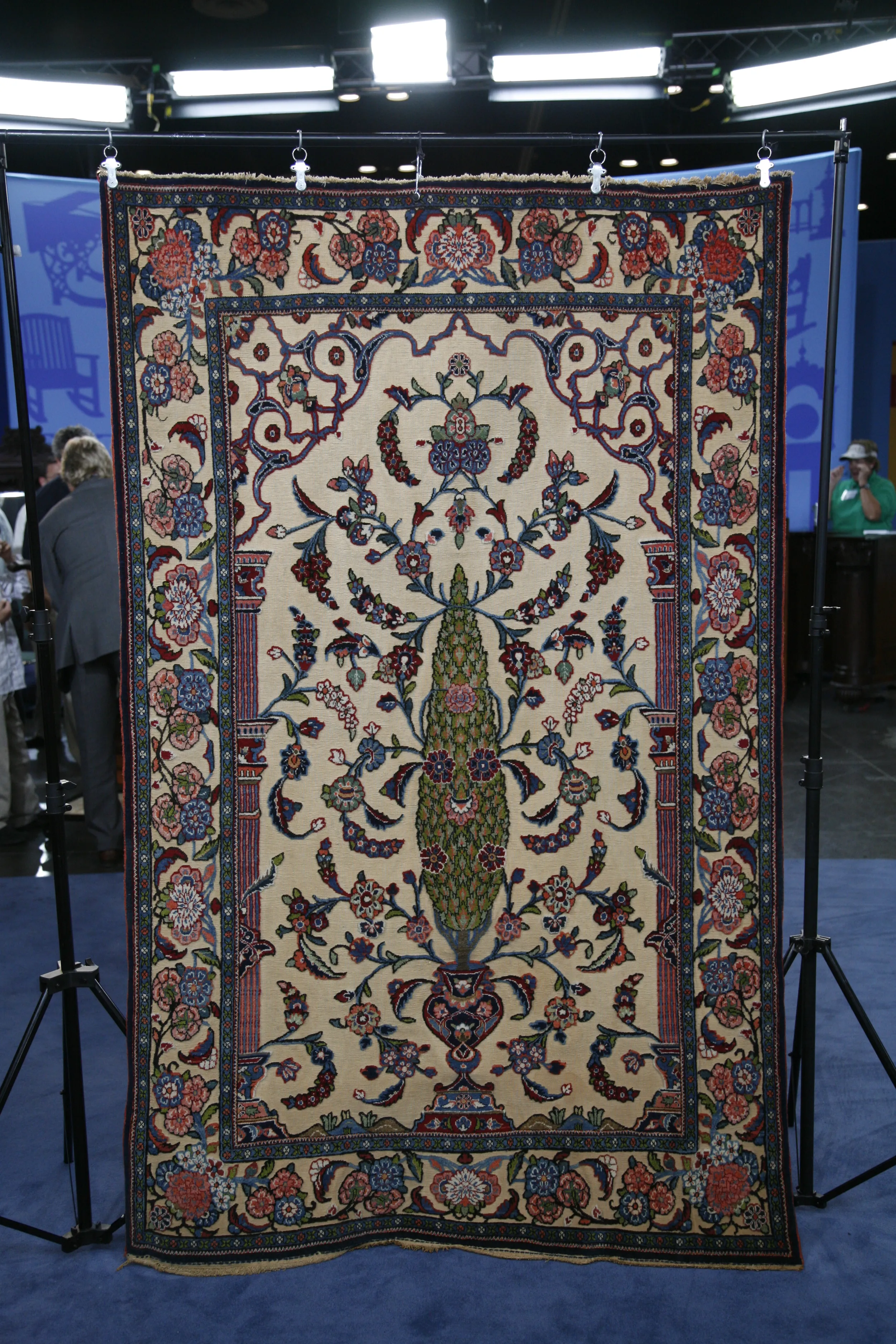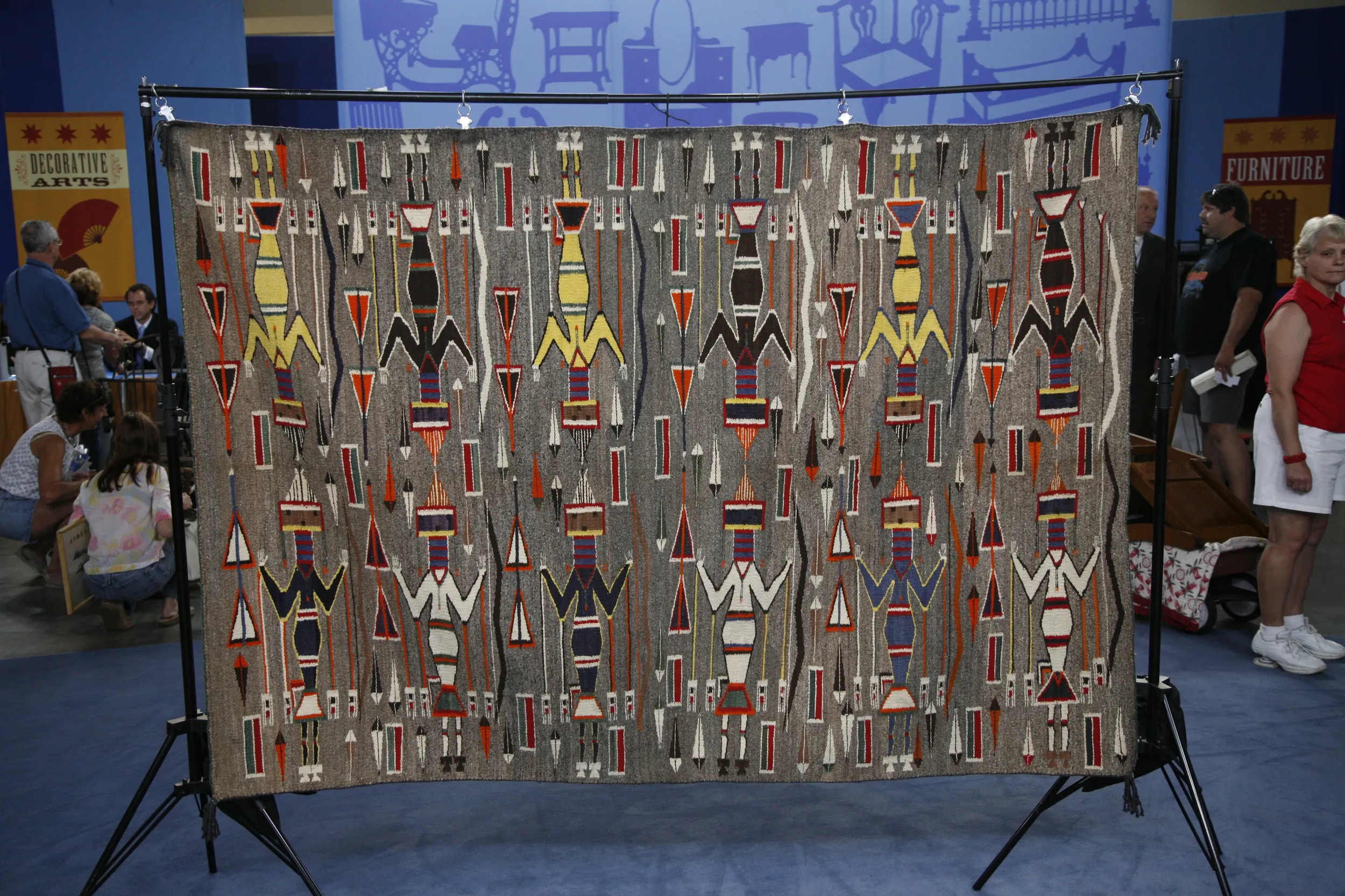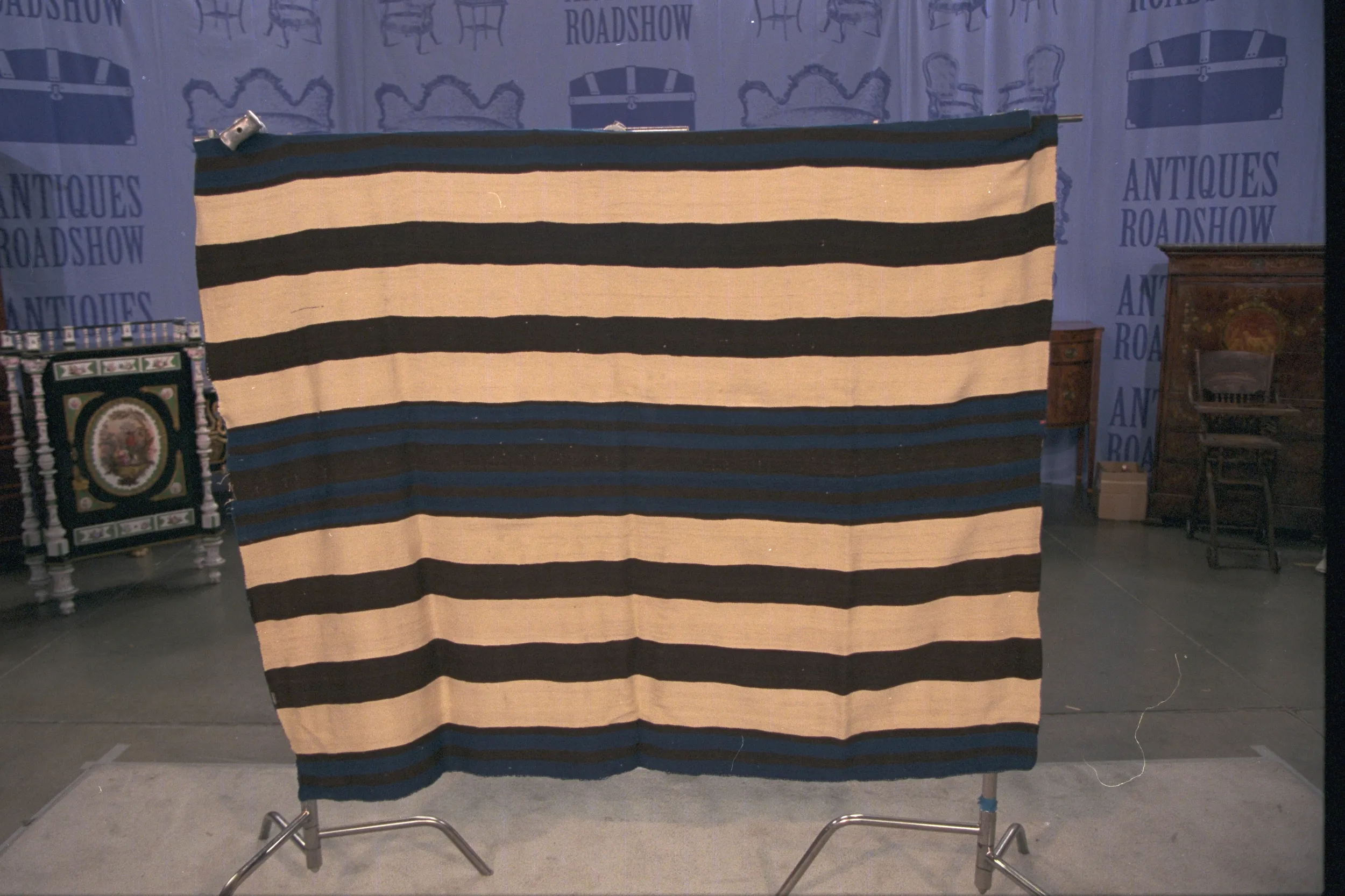GUEST: I collect a lot of things that are Native American. I like the jewelry, I like the clothing, and I love anything colorful. I went to an estate sale, and it was at the sale, and I'd never seen anything like it.
APPRAISER: This particular piece is all trade material. And one of the early objects to come in was this blanket ground that this ribbon appliqué has been applied to. The edging on the top is the selvage end of wool stroud. And stroud actually comes from Stroud in England. It's a very dense wool, and it's easy for the Native Americans to have worked with. They could cut into it and it wouldn't shred.
GUEST: All right.
APPRAISER: The ribbon started coming in early, also. Silk ribbon became a trade item in the late 1700s, after the French Revolution, because there became a surplus-- it was no longer appropriate in clothing in France. It was considered bourgeois. So, the Americas got the surplus, so they started trading that in to the Natives, too. The Native Americans adapted it into this lovely appliqué. And it's been a tradition since. Now, this blanket was created in the 1920s to '30s. This piece is the work of Osage Indians, and it's a woman's blanket. The Osage Indians, at the time of this piece was created, were living in Oklahoma. This ribbon work is exquisite, with the cut-out and the designing on it. It's a little hard to tell. There were women working in the 1870s that were capable of stitching in a manner that almost mimicked machine. I believe this is mostly machine-stitched with some additional hand work on it.
GUEST: All right.
APPRAISER: And it might have been done by the same women who were working and known in the '70s. But that would take some work to compare. The reason you're missing the ribbon at the bottom is because of the fragile nature. So to see one in such good condition is really exciting. What did you pay for it?
GUEST: It was $200.
APPRAISER: On today's market, in a retail setting, it would be worth $3,000 to $4,000.
GUEST: (laughs): Okay.
APPRAISER: So you've done well.
GUEST: Right.

